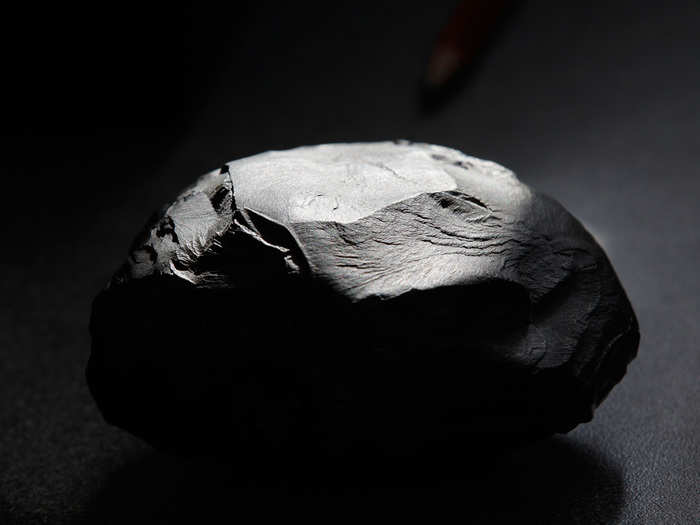- Home
- stock market
- The Father Of Fracking Has Died: Here's What The Process He Perfected Looks Like Up Close
The Father Of Fracking Has Died: Here's What The Process He Perfected Looks Like Up Close
Cabot's regional office is about 10 minutes south of the town of Montrose in northeast Pennsylvania, near Scranton. It's remote country.

We arrived at the drilling site, this one called The Bray. All pads are protected by security, and visitors must sign in and out.
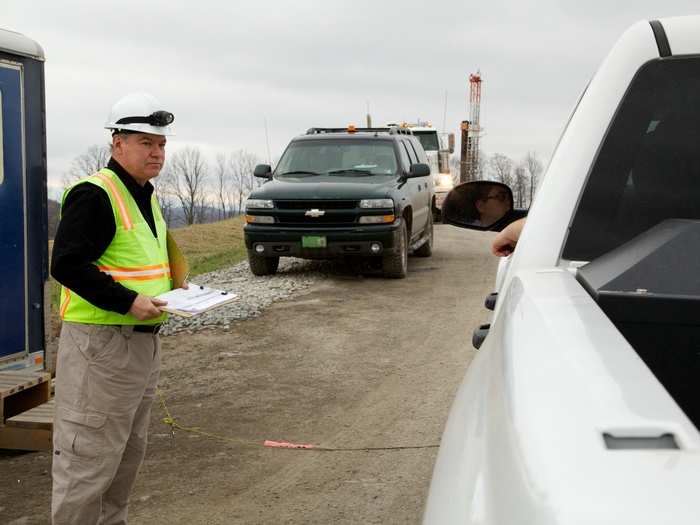
Here's a drilling pad nearing completion. This one's called The Bray. Even from afar, it's pretty breathtaking.
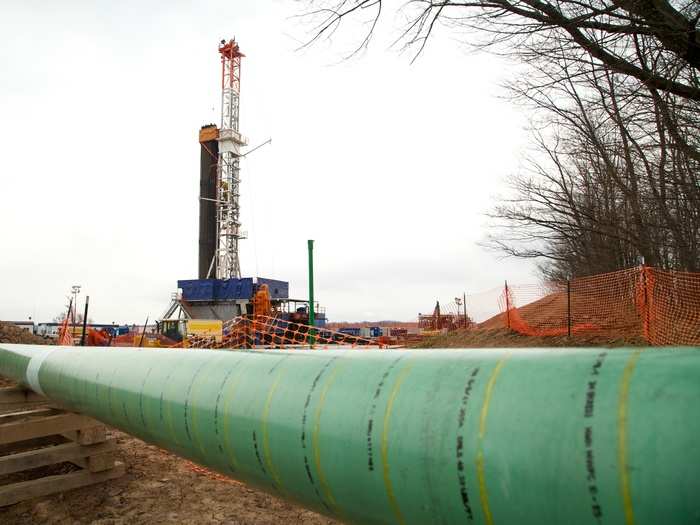
Each drill section is 30-feet long, and three are stacked together at a time.
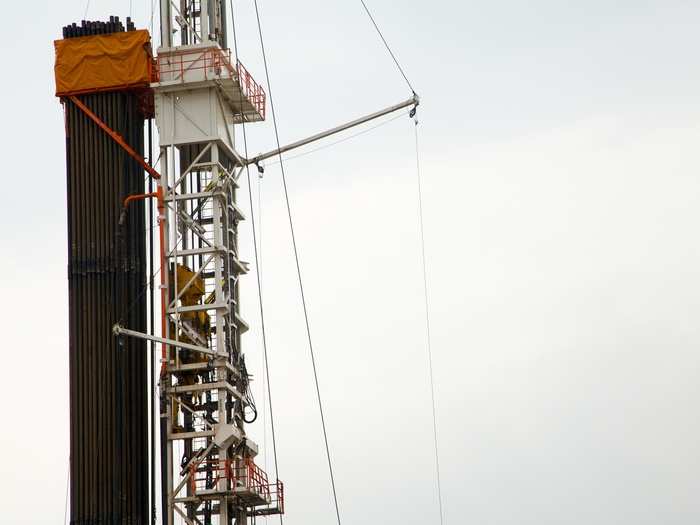
Up to 40 men from as many as 40 contractors are on the rig at any given time.
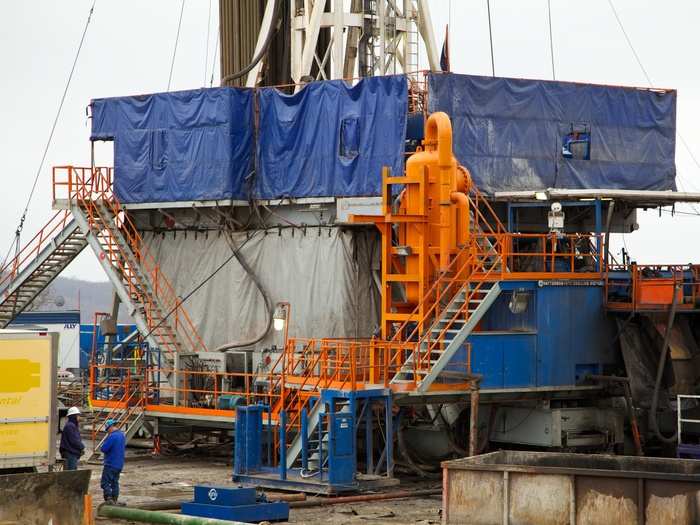
Here's a view of what the site looks like behind the rig. It's practically a small city.
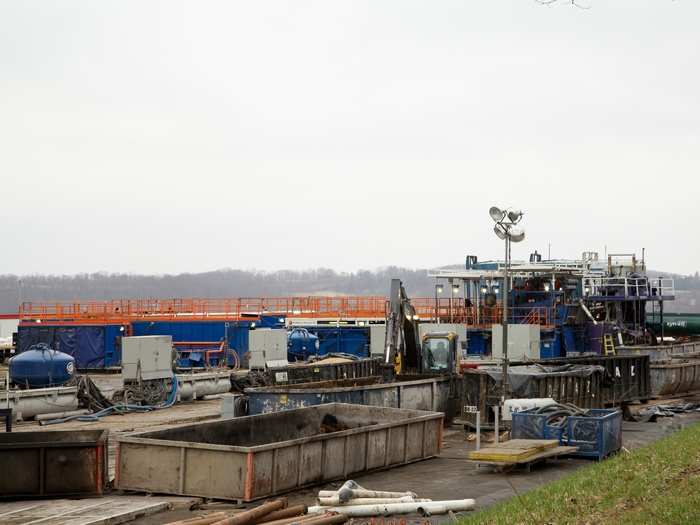
These mulch-filled socks are used to catch water runoff and control erosion.
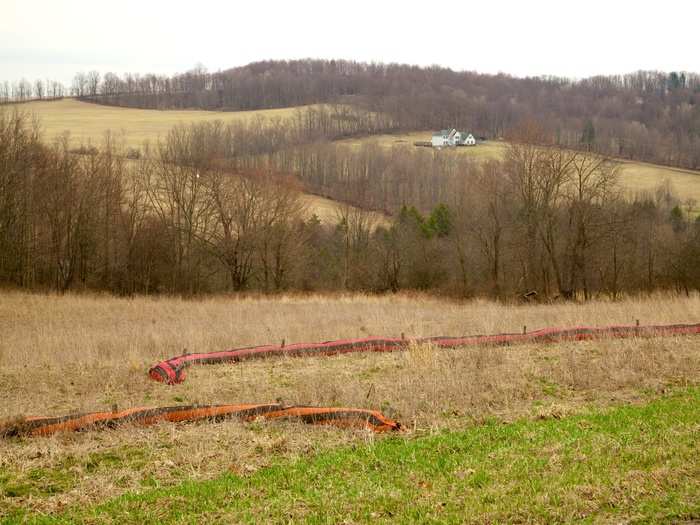
An up-close view.
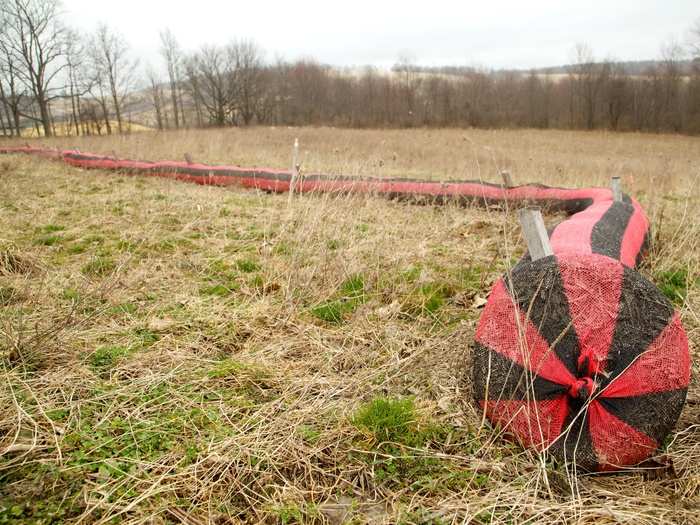
This is called the choke manifold. This is the point at which Cabot's gas gets transferred to the pipeline that will carry it to market.
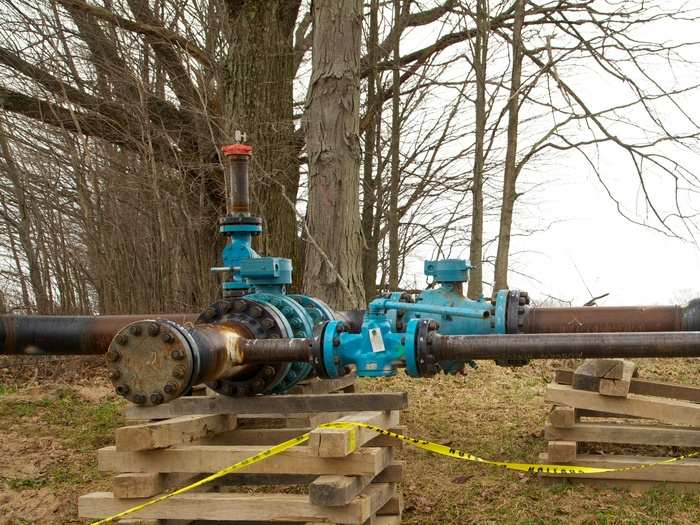
When everything is hooked up, this pipe will take gas to a production facility.
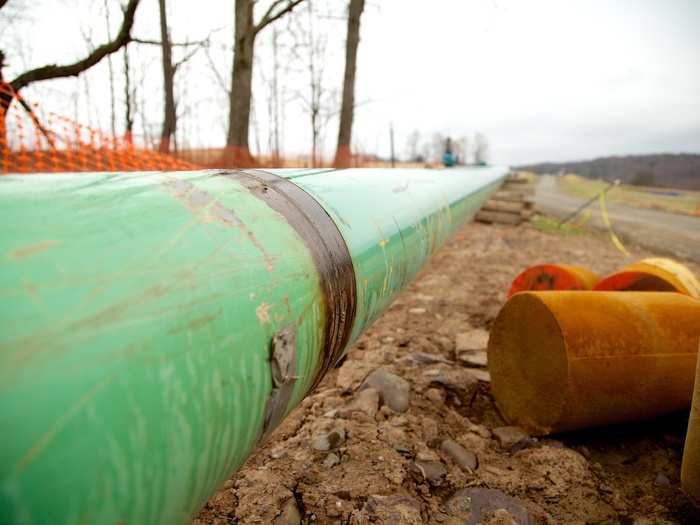
Here is part of the path the pipeline will eventually take.
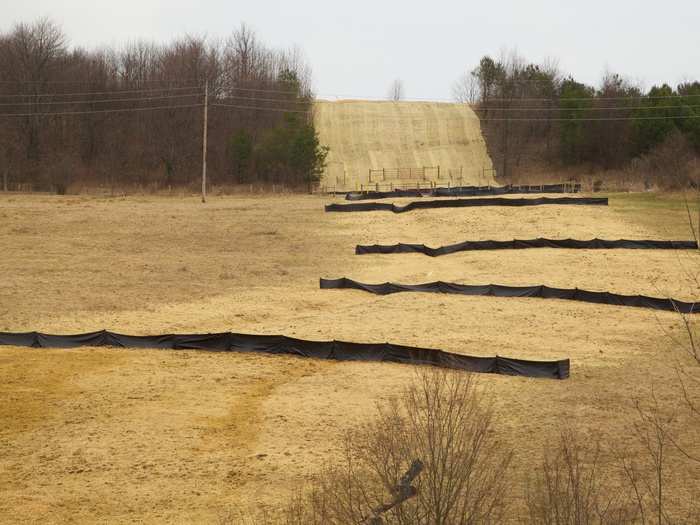
The Bray rig will end up drilling 10 wells at a rate of 20 days per well. This is all possible thanks to horizontal drilling.
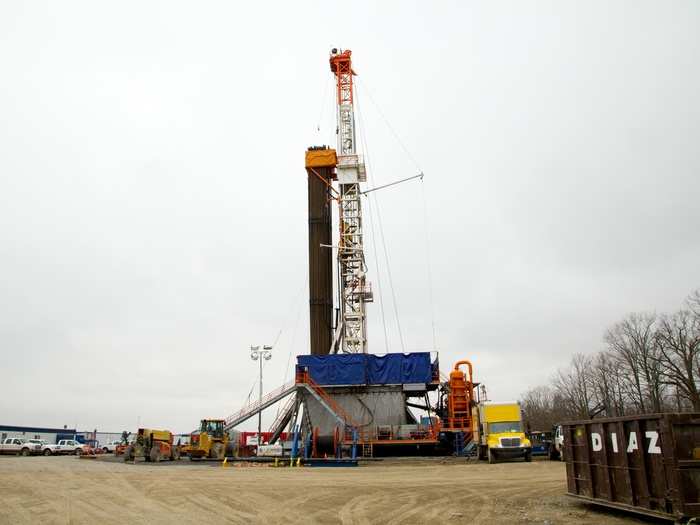
Horizontal drilling has been around for decades, though it's been improved on over the years of course. But it wasn't economically viable until recently, as oil and gas prices rose.
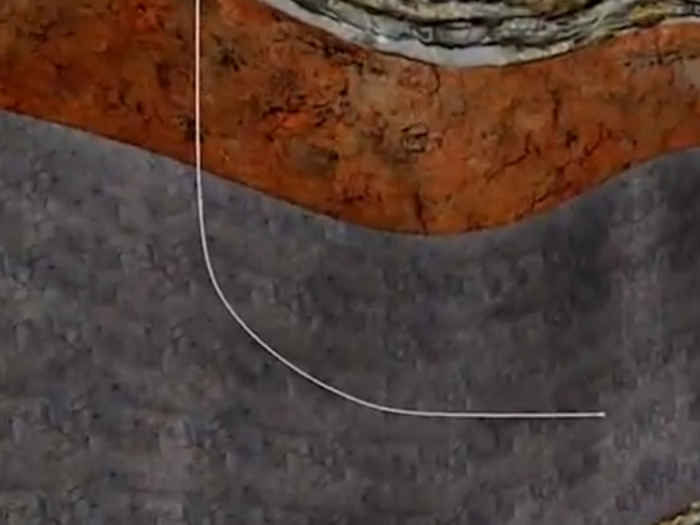
This "mud motor" pipe is what allows drillers to "make the turn" from vertical to horizontal. Workers above send fluid down the pipe, which imparts torque and allows it to turn.
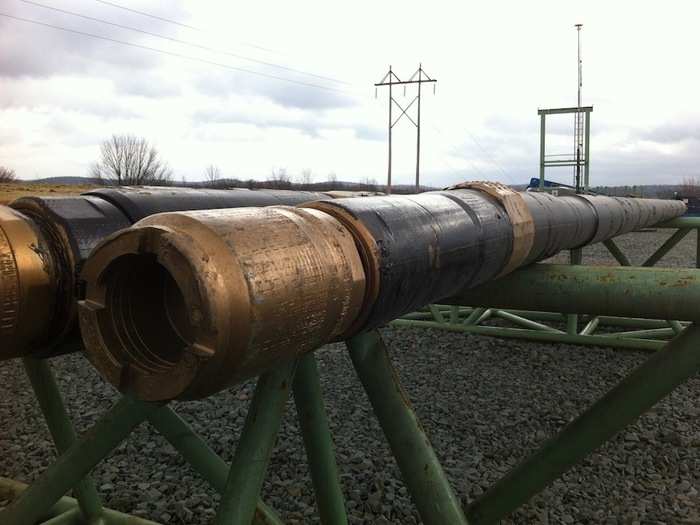
Here's the drill bit used to drill horizontally, called a pilot. It's fitted with a GPS sensor.
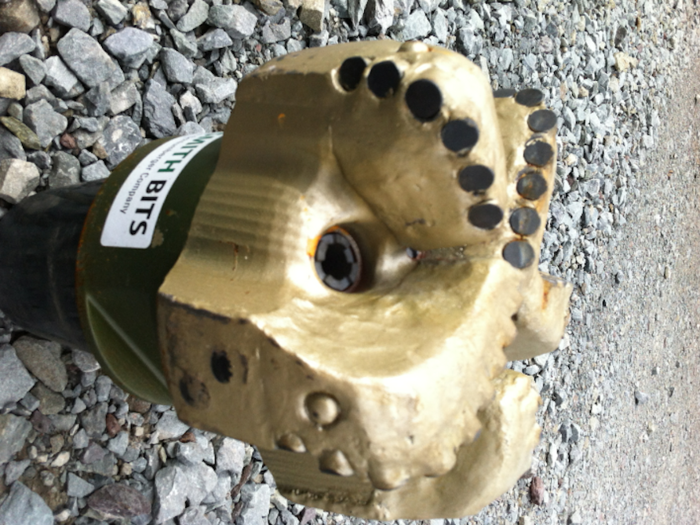
A rig called a wire-line truck monitors the well's depth and direction via detection devices sent into the earth.

Once the horizontal drilling is completed, Cabot can begin hydraulic fracturing. The company declined to show us the fracking process in action, and it's true the good stuff happens underground. But this image provides a good idea of how it works — it's basically a gaggle of trucks pumping water down the well, which create fissures through which the gas will travel.
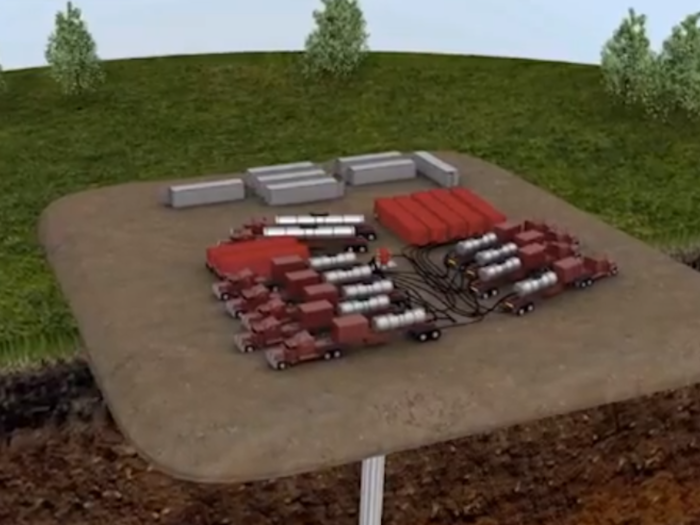
Here's an animated view of what's happening underground during the fracking stage.

After about two months of drilling, when all the enormous equipment is gone, you get this: a simple set of pipes. This is a natural gas well.
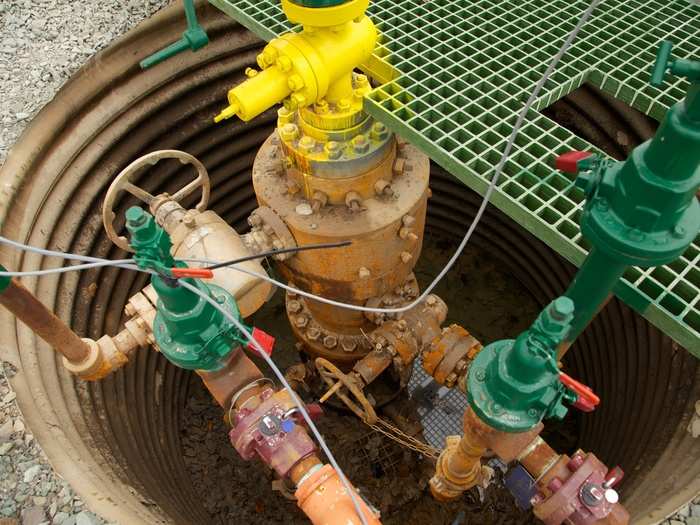
This is called the "tree," often known as the Christmas Tree. It controls the well's flow. And if something goes wrong, one of these wheels can be turned to shut off the well.
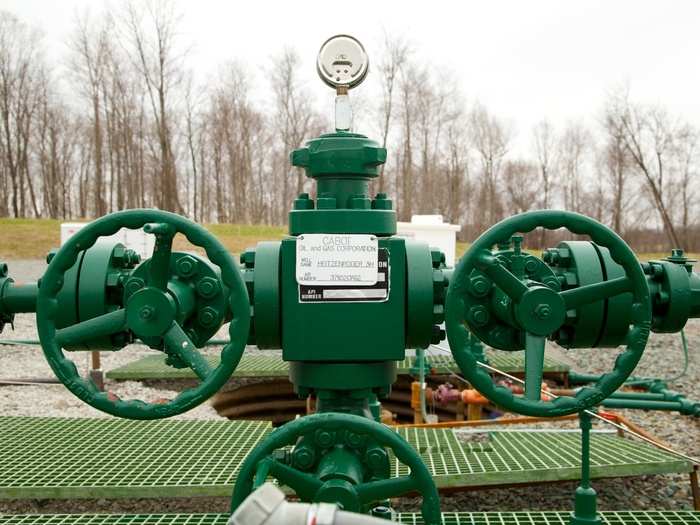
Each well is controlled by two separate gas production units (GPUs) — large green boxes that heat up and separate out the gas. The Cabot producing well site we visited, the Heitzenroder, has two producing wells.
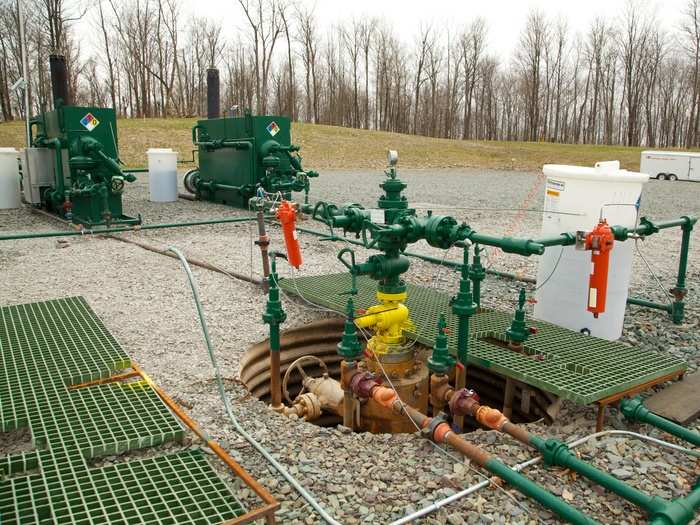
Condensate from the wells separates out into these containers, called brine tanks.

These wells are currently in their peak production phase, which lasts up to four years. But they'll continue producing gas for decades.
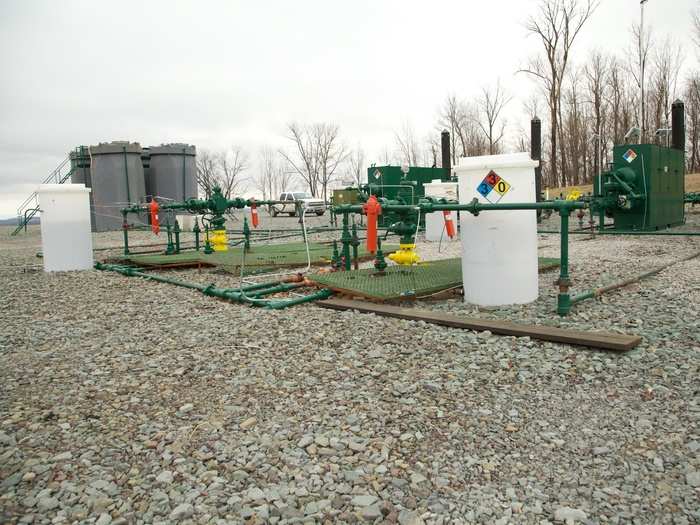
Looking down from the well site, you can see the containers that were used to store water to be mixed with frac fluid while the site was being drilled (they're empty here). Cabot doesn't use open pits to hold the water that will be mixed into fracking fluid.
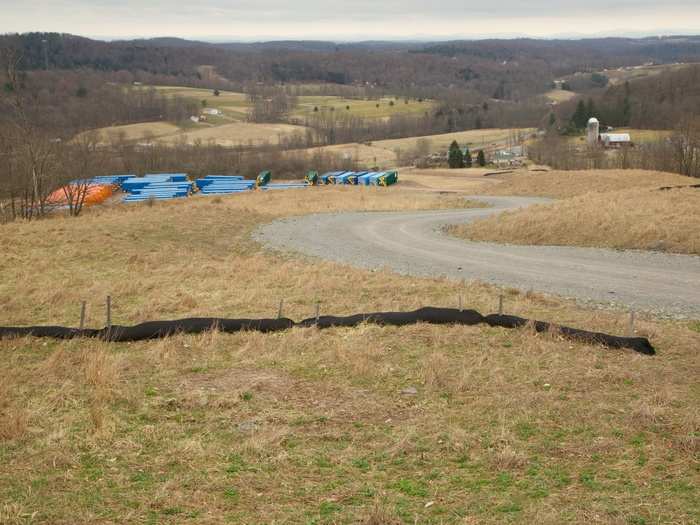
They hold 21,000 gallons. These are inactive and are awaiting use at the next site.
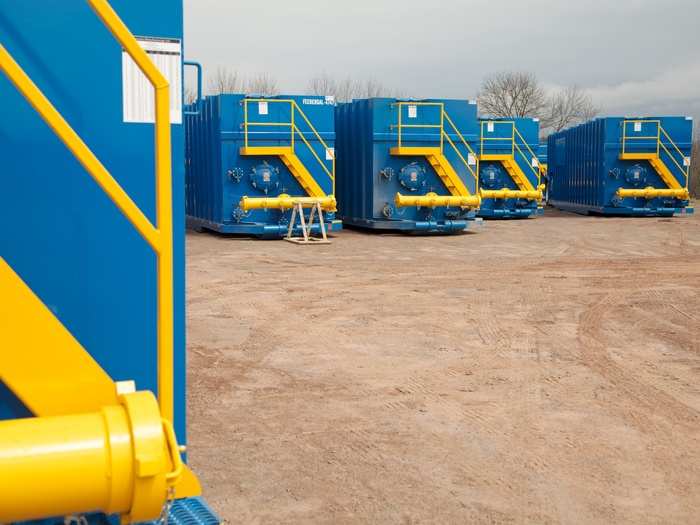
We'll leave you with this image capturing the two sides of the fracking-debate coin: while the process may intrude on the landscape, there really aren't that many people around. And many people are cashing in on the income from drilling rights, which is made possible by fracking.
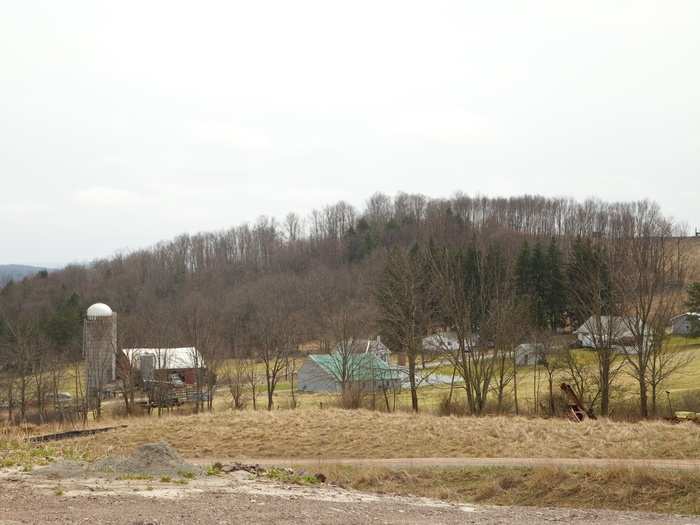
Popular Right Now
Popular Keywords
Advertisement
